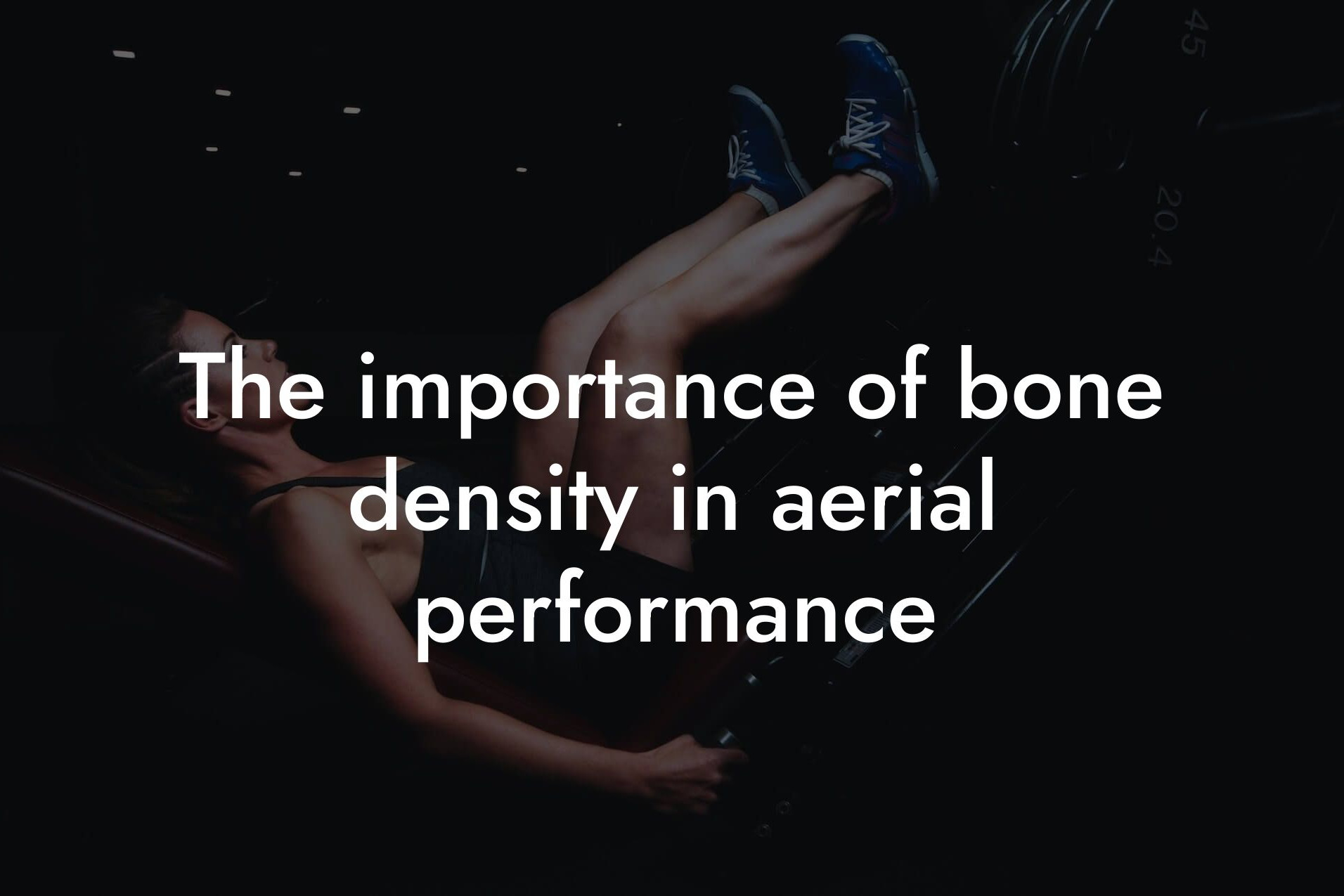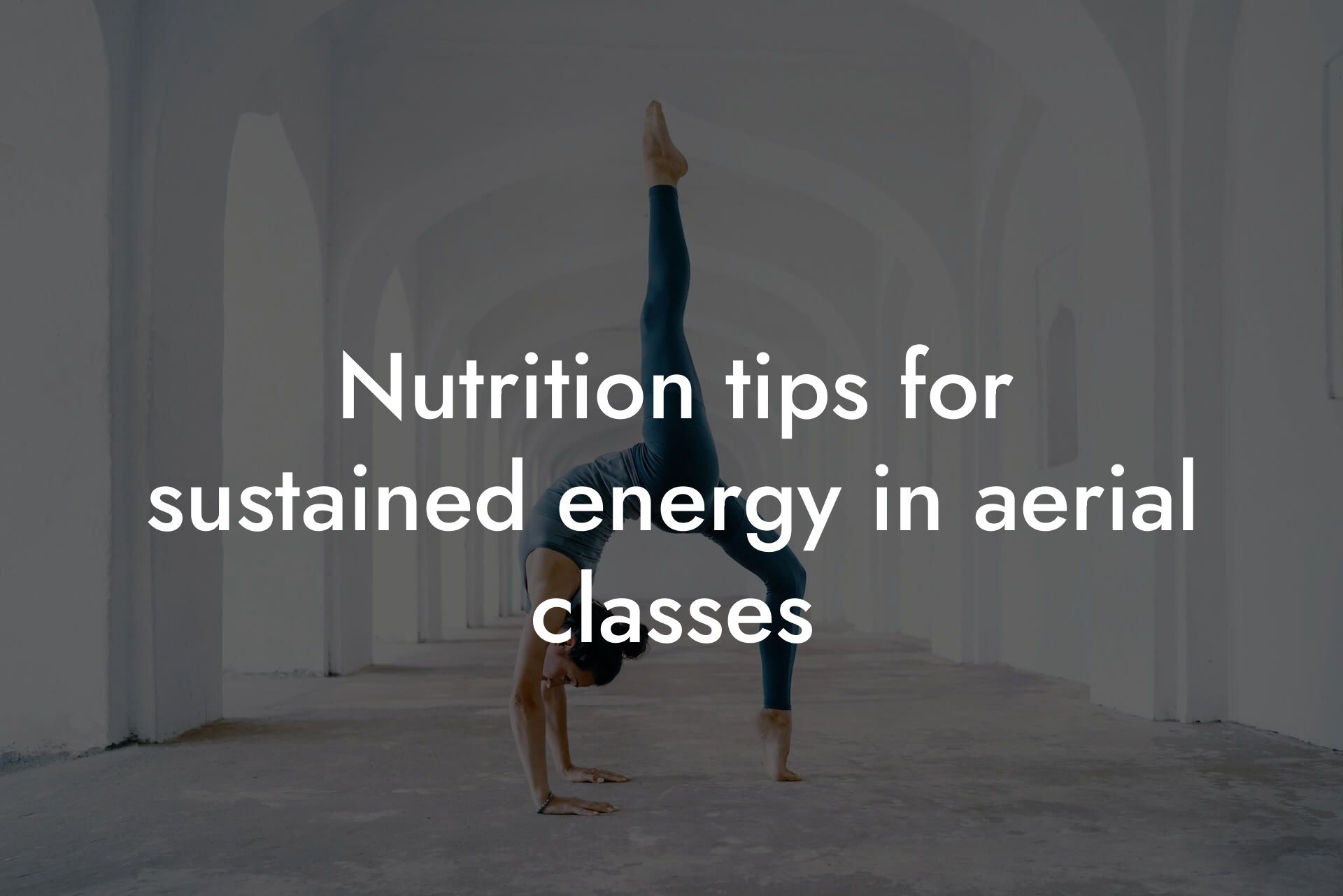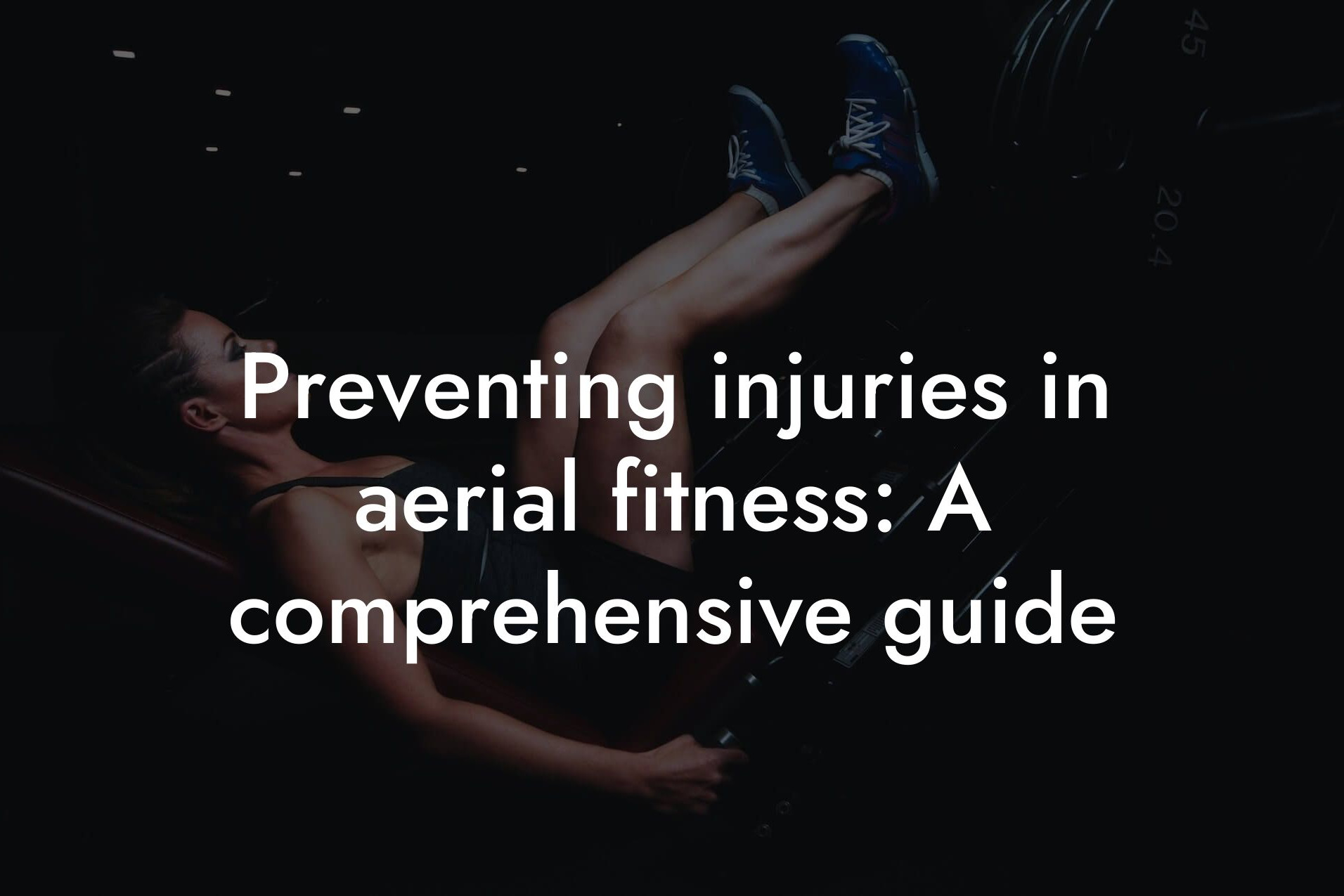As an aerial artist, having a strong physique is crucial for executing complex movements and maintaining control while airborne. One of the key factors that can significantly impact your performance is your body fat percentage. Excess body fat can hinder your strength-to-weight ratio, making it more challenging to perform aerial stunts and poses. In this article, we'll delve into the importance of reducing body fat for improved strength-to-weight ratio in aerial arts and provide you with a comprehensive guide on how to achieve it.
Table of Contents
The Ideal Body Fat Percentage for Aerial Artists
The ideal body fat percentage for aerial artists varies depending on factors such as age, sex, and performance level. However, a general guideline is to aim for a body fat percentage between 10-15% for men and 15-20% for women. This range allows for a lean yet athletic physique, enabling you to maintain strength and power while minimizing excess weight.
The Impact of Excess Body Fat on Aerial Performance
Excess body fat can have a significant impact on your aerial performance, leading to:
- Reduced strength-to-weight ratio: Excess body fat increases your overall weight, making it more challenging to generate power and control while airborne.
- Decreased flexibility and mobility: Excess body fat can restrict your range of motion, making it more difficult to execute complex movements and poses.
- Increased risk of injury: Carrying excess body fat can put additional stress on your joints and muscles, increasing the risk of injury and strain.
- Reduced endurance: Excess body fat can decrease your cardiovascular endurance, making it more challenging to sustain long performances.
Creating a Calorie Deficit for Weight Loss
To reduce body fat, you need to create a calorie deficit, meaning you consume fewer calories than your body burns. This can be achieved through a combination of diet and exercise. Aim to create a daily calorie deficit of 500-1000 calories to promote weight loss while preserving muscle mass.
Nutrition Strategies for Aerial Artists
A well-structured nutrition plan is essential for reducing body fat and improving overall performance. Focus on:
- Lean protein sources: Include lean protein sources like chicken, fish, and tofu in your diet to support muscle growth and repair.
- Complex carbohydrates: Focus on complex carbohydrates like whole grains, fruits, and vegetables to provide energy and support overall health.
- Healthy fats: Include healthy fats like nuts, seeds, and avocados in your diet to support hormone production and overall health.
- Hydration: Adequate hydration is crucial for performance and recovery. Aim to drink at least 8-10 glasses of water per day.
Exercise Strategies for Aerial Artists
In addition to a well-structured nutrition plan, a comprehensive exercise program is essential for reducing body fat and improving overall performance. Focus on:
- Resistance training: Incorporate resistance exercises like weightlifting, bodyweight exercises, or aerial-specific exercises to build strength and muscle mass.
- Cardiovascular training: Include cardiovascular exercises like running, cycling, or swimming to improve endurance and burn excess calories.
- Flexibility and mobility exercises: Incorporate exercises that improve flexibility and mobility, such as yoga or Pilates, to enhance overall performance.
- Aerial-specific training: Incorporate aerial-specific exercises and drills to improve strength, power, and control while airborne.
Monitoring Progress with DEXA Scans
Tracking your progress is crucial for achieving your goals. At Tano Performance Group, we use DEXA scans to provide a comprehensive body assessment, including body fat percentage, lean mass, and bone density. Regular DEXA scans can help you:
- Track changes in body composition
- Identify areas for improvement
- Adjust your nutrition and exercise program accordingly
Reducing body fat for improved strength-to-weight ratio is crucial for aerial artists. By understanding the importance of body fat reduction, creating a calorie deficit, and implementing a well-structured nutrition and exercise program, you can achieve your goals and take your aerial performance to the next level. Remember to track your progress with regular DEXA scans and make adjustments to your program as needed. With dedication and perseverance, you can achieve a lean, athletic physique that will enhance your overall performance and reduce your risk of injury.
Frequently Asked Questions
What is the ideal body fat percentage for aerial arts?
The ideal body fat percentage for aerial arts varies depending on individual goals and needs. However, a general guideline is to aim for a body fat percentage between 18-24% for women and 10-17% for men. This range allows for a strong strength-to-weight ratio while maintaining a healthy and functional body composition.
Why is a low body fat percentage important for aerial arts?
A low body fat percentage is important for aerial arts because it allows for a higher strength-to-weight ratio, making it easier to perform aerial movements and poses. Excess body fat can increase the risk of injury and decrease overall performance.
How does body fat affect my aerial performance?
Excess body fat can affect your aerial performance in several ways. It can increase your overall weight, making it more difficult to lift and maneuver your body. It can also decrease your power-to-weight ratio, making it harder to generate force and speed. Additionally, excess body fat can increase your risk of injury, particularly in the joints and muscles.
What are the benefits of reducing body fat for aerial arts?
Reducing body fat can have numerous benefits for aerial arts, including increased strength, power, and endurance. It can also improve overall performance, reduce the risk of injury, and enhance aesthetic appeal.
How do I measure my body fat percentage?
There are several ways to measure body fat percentage, including skinfold measurements, bioelectrical impedance analysis (BIA), and dual-energy X-ray absorptiometry (DXA). It's best to consult with a healthcare professional or certified fitness expert to determine the most accurate method for your needs.
What is the best way to reduce body fat for aerial arts?
The best way to reduce body fat for aerial arts is through a combination of proper nutrition, consistent training, and patience. Focus on consuming a balanced diet with plenty of protein, healthy fats, and complex carbohydrates. Aim to create a calorie deficit through a combination of diet and exercise, and incorporate strength training and cardio exercises into your routine.
How long does it take to see results from reducing body fat?
The time it takes to see results from reducing body fat varies depending on individual factors, such as starting body fat percentage, diet, and exercise routine. However, with consistent effort and patience, you can expect to see noticeable results within 6-12 weeks.
What are some common mistakes to avoid when trying to reduce body fat?
Common mistakes to avoid when trying to reduce body fat include crash dieting, overtraining, and neglecting proper nutrition. It's also important to avoid fad diets and quick fixes, and instead focus on making sustainable lifestyle changes.
How can I maintain my current body fat percentage while still improving my aerial performance?
To maintain your current body fat percentage while improving your aerial performance, focus on increasing your strength and power through targeted exercises and training. You can also work on improving your technique and efficiency in the air to maximize your performance.
What are some exercises that can help improve my strength-to-weight ratio for aerial arts?
Exercises that can help improve your strength-to-weight ratio for aerial arts include pull-ups, dips, squats, lunges, and deadlifts. You can also incorporate plyometric exercises, such as box jumps and burpees, to improve your power and explosiveness.
How often should I train to see improvements in my aerial performance?
The frequency of training depends on individual factors, such as current fitness level and goals. However, a general guideline is to aim for 3-4 training sessions per week, with at least one or two rest days in between. It's also important to incorporate active recovery, such as yoga or light cardio, to aid in recovery and injury prevention.
What is the role of nutrition in reducing body fat for aerial arts?
Nutrition plays a crucial role in reducing body fat for aerial arts. Focus on consuming a balanced diet with plenty of protein, healthy fats, and complex carbohydrates. Aim to create a calorie deficit through a combination of diet and exercise, and avoid processed and high-calorie foods.
How can I stay motivated to continue reducing body fat and improving my aerial performance?
Staying motivated can be challenging, but there are several strategies to help. Set specific and achievable goals, track your progress, and celebrate small victories along the way. Find a workout buddy or accountability partner, and reward yourself for milestones achieved.
What are some common myths about reducing body fat for aerial arts?
Common myths about reducing body fat for aerial arts include the idea that you need to be extremely lean to perform well, or that crash dieting is an effective way to lose weight quickly. It's also a myth that you need to spend hours in the gym to see results, or that you need to eliminate entire food groups to achieve your goals.
How can I balance my aerial training with other aspects of my life?
Balancing aerial training with other aspects of your life can be challenging, but it's essential for overall well-being. Prioritize your training sessions, but also make time for rest, recovery, and other activities that bring you joy and fulfillment.
What are some common injuries associated with aerial arts, and how can I prevent them?
Common injuries associated with aerial arts include shoulder and wrist strains, lower back injuries, and ankle sprains. To prevent these injuries, focus on proper technique, warm up and cool down properly, and incorporate injury prevention exercises into your training routine.
How can I modify my aerial training to accommodate injuries or physical limitations?
Modifying your aerial training to accommodate injuries or physical limitations is essential for continued progress and injury prevention. Work with a qualified instructor or trainer to develop a modified training plan that meets your individual needs and goals.
What are some mental preparation techniques that can help me improve my aerial performance?
Mental preparation techniques that can help improve your aerial performance include visualization, positive self-talk, and breathing exercises. Focus on building confidence and mental toughness, and practice mindfulness and self-awareness to stay focused and present in the moment.
How can I stay safe while training and performing aerial arts?
Staying safe while training and performing aerial arts is crucial. Always warm up and cool down properly, and ensure that you have a qualified spotter or safety harness in place. Focus on proper technique and body awareness, and never push yourself beyond what feels comfortable and safe.
What are some common misconceptions about aerial arts and body fat?
Common misconceptions about aerial arts and body fat include the idea that you need to be extremely lean to perform well, or that body fat is inherently bad for aerial performance. It's also a misconception that you need to eliminate entire food groups to achieve your goals, or that crash dieting is an effective way to lose weight quickly.
How can I find a qualified instructor or trainer to help me with my aerial training and body fat reduction?
Finding a qualified instructor or trainer can be essential for achieving your goals. Research local studios and instructors, read reviews and testimonials, and ask for referrals from friends or fellow aerial enthusiasts. Look for instructors who are certified in aerial arts and have experience working with clients with similar goals and needs.
What are some additional resources that can help me with my aerial training and body fat reduction?
Additional resources that can help with your aerial training and body fat reduction include online tutorials and videos, fitness and nutrition apps, and books and articles on related topics. You can also join online communities and forums, and attend workshops and seminars to learn from experienced instructors and trainers.
Here are some related articles you might love...
- The importance of bone density in aerial performance
- Nutrition tips for sustained energy in aerial classes
- Preventing injuries in aerial fitness: A comprehensive guide
- Improving core strength for aerial arts
- Strength training tips specific to aerial fitness
- How body composition affects performance in aerial fitness
- Maintaining muscle recovery with aerial training
- Using DEXA scans to monitor progress in aerial fitness
- Balancing strength and flexibility in aerial fitness
Zak Faulkner
Zak Faulkner is a leading authority in the realm of physical health and body composition analysis, with over 15 years of experience helping professionals optimise their fitness and well-being. As one the experts behind Tano Performance Group, Zak has dedicated his career to providing in-depth, science-backed insights that empower clients to elevate their physical performance and overall health.
With extensive knowledge of DEXA technology, Zak specializes in delivering comprehensive body assessments that offer precise data on body fat, muscle mass, bone density, and overall physique. His expertise enables individuals to make informed decisions and achieve their fitness goals with accuracy and confidence. Zak’s approach is rooted in a deep understanding of human physiology, combined with a passion for helping clients unlock their full potential through personalised strategies.
Over the years, Zak has earned a reputation for his commitment to excellence, precision, and client-focused service. His guidance is trusted by top professionals who demand the best when it comes to their health. Whether advising on fitness programs, nutritional strategies, or long-term wellness plans, Zak Faulkner’s insights are a valuable resource for anyone serious about taking their health and fitness to the next level.
At Tano Performance Group, Zak continues to lead our Content Team revolutionising how professionals approach their physical health, offering unparalleled expertise that drives real results.




